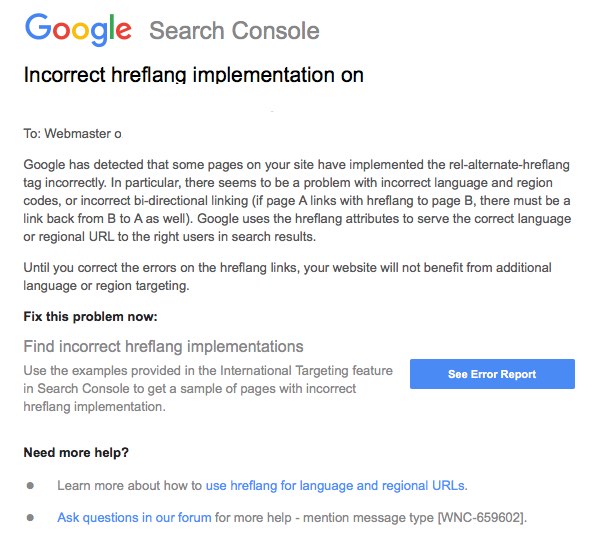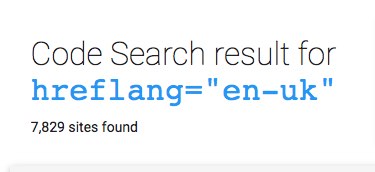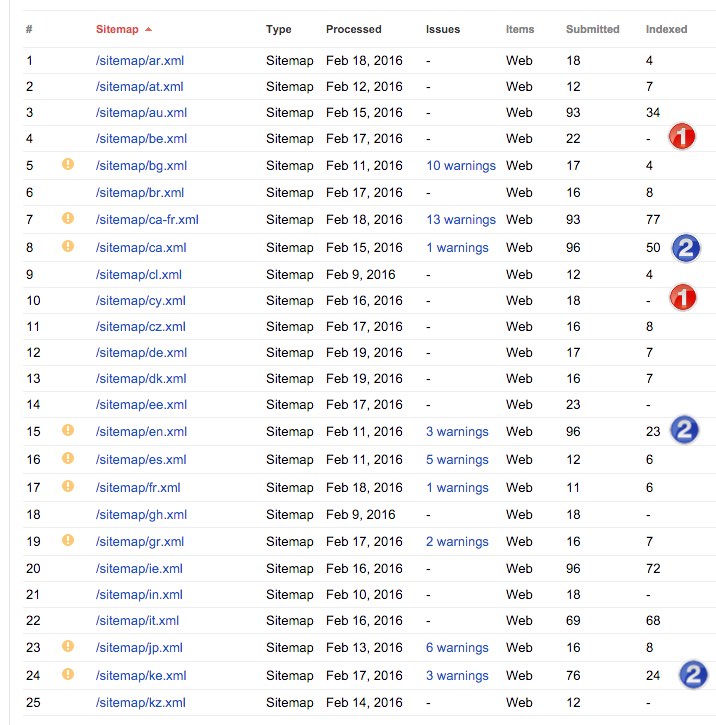Adding HREFLang Link Elements to Global Site Directories
May 1, 2018Incorrect Global Canonical Tag Implementation
May 17, 2018Incorrect hreflang Implementation Error Notice
MAY 20, 2016 BY BILL HUNT
This past week Google has sent out a large number of notices for sites that have Incorrect HREFlang Implementations. The notice looks like this one below references two of the most common errors. Both of these errors are described below.

Error 1 – Problem with incorrect language and region codes
About 1/3 of the errors I received calls and email about are related to incorrect country and language coded. I recently detailed a number of these common errors and how to fix them as well as preventing them in the article Preventing Unknown Language Code Errors which should cover most of your problems. This is a very common problem caused by people not paying attention to detail. In many cases, the developer or SEO just mirrors the structure of the site using jp/jp or as nearly every site aligns to the UK as /uk and not GB it is not surprising that is one of the largest errors.
A quick search in NerdySearch for the incorrect country and language en-uk we find that there are nearly 8,000 sites including some very large sites that should know better. The correct code is actually en-GB. Japan is another common problem as are others that I will detail in some research I am doing on the prevalence of these incorrect codes.


How to Fix these errors?
If you log into Webmaster Console Google will tell you which ones are in error. If you are using the HREfLang Meta Element you will need to change the code you are using to generate them to set the correct country or language. Look at the language codes you are using and match them to the ISO Language Code list and do the same with your countries using the ISO Country/Regional Code List.
If you are using XML Site Maps that makes it easier to simply go in and do a Search and Replace and then upload the files. Once Uploaded go in and resubmit to the search engines for indexing. Make sure that you monitor the indexing.
Error 2 – Incorrect Bi-directional linking
In order for the HREFLang to work you need to link page A to all the alternates and then all of the alternates back to A. We see this is the number 1 error that people make especially with homegrown or some of the free mapping tools. (if page A links with hreflang to page B, there must be a link back from B to A as well).
Correct Bi-Directional Linking
If you swear that you have all of your links set with A to B and B to A and you are using an HREFLang XML Site Map for each country then maybe Google cannot or will not update your XML files! I had a call this morning from a new customer that swore that they had them all mapped. We looked into their Webmaster tools account and there it was. We have seen this when people do not clean HREFLang XML Site Maps and load broken, redirected or URL’s with canonical links to other pages. As in the example below, Google will slow or stop indexing XML Site Maps that have a lot of errors in them resulting in them not detecting the rel=alternate element and give an error.

Shameless Plug- we built Error Detection Functionality into HREF Builder!
Preventing Bi-Directional HREFLang Linking Errors
One of the first features we built into HREFLang Builder was the cross-reference testing. This will detect all sorts of errors from redirects, 404 robots, and canonical differences. The tool will not add any page with an error to the file ensuring you have 100% clean files. You can then export the list of errors and give them to the tech team to fix them.
Green – means that we found a match with that page between these countries
Red – means we did not find a match for that page between countries

How to Fix Bidirectional Errors?
The Webmaster Console view for this error is fairly confusing but it will tell you which pages are missing the links or are missing a reference in XML Site Maps. If you have XML Site Maps then check for errors as I note above and make any fixes. Remove any that are redirects, 404 or robots blocked URL’s. If you have them in pages you can use a great HREF Testing tool from the guys at Merkyl. The other option is to go over and set up an account with our HREF Builder and we can import the files and find the missing pages.
